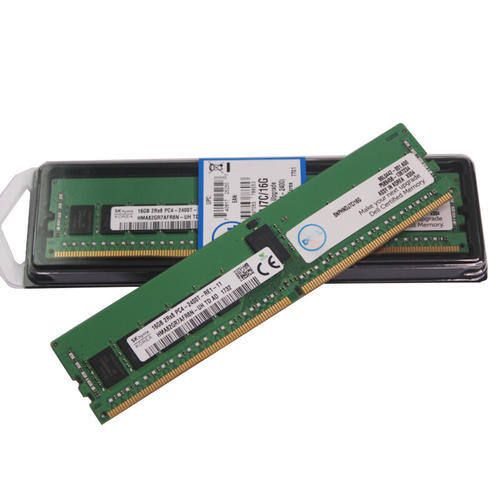Understanding Modern Data Center Memory Technologies
The landscape of server memory has evolved dramatically in recent years, with new technologies promising unprecedented performance and capabilities for enterprise computing. As data centers face growing demands for processing power and storage capacity, choosing the right server memory type has become crucial for system architects and IT professionals. Let's explore the key differences between today's leading server memory technologies and understand how they shape the future of enterprise computing.
Evolution of DDR Memory in Enterprise Systems
DDR4 Architecture and Capabilities
DDR4 represents the fourth generation of Double Data Rate memory, bringing significant improvements over its predecessors. Operating at base frequencies between 2133 MHz and 3200 MHz, DDR4 server memory types deliver impressive bandwidth while maintaining relatively low power consumption. The technology utilizes a 288-pin configuration and operates at 1.2V, making it more energy-efficient than previous generations.
In enterprise environments, DDR4 has proven its reliability through features like Error-Correcting Code (ECC) support and enhanced voltage regulation. These capabilities make it particularly suitable for mission-critical applications where data integrity is paramount. The mature DDR4 ecosystem also offers a wide range of capacity options, from 4GB to 256GB per module, providing flexible scaling options for various server configurations.
DDR5: The New Performance Standard
DDR5 emerges as the latest evolution in server memory types, pushing the boundaries of performance and efficiency. With base frequencies starting at 4800 MHz and theoretical maximums reaching 8400 MHz, DDR5 delivers roughly double the bandwidth of DDR4. The technology introduces innovative features like same-bank refresh and decision feedback equalization, enabling more efficient memory operations.
Perhaps most significantly, DDR5 incorporates on-die ECC and power management integrated circuits (PMIC) on each module. These advancements result in improved data integrity and more precise voltage control, critical features for enterprise server environments. The increased channel architecture of DDR5 also allows for better memory density scaling, supporting future expansion needs.
NVDIMM Technology and Persistent Memory Solutions
Understanding NVDIMM Architecture
Non-Volatile Dual In-line Memory Module (NVDIMM) technology represents a revolutionary approach to server memory types, combining the speed of volatile memory with the persistence of storage devices. NVDIMMs retain data even after power loss, offering unique advantages for applications requiring both high performance and data persistence.
The technology comes in several forms, including NVDIMM-N, which pairs traditional DRAM with NAND flash memory, and NVDIMM-P, which uses newer persistent memory technologies. This versatility allows organizations to choose solutions that best match their specific workload requirements and performance needs.
NVDIMM Use Cases and Benefits
In enterprise environments, NVDIMM technology proves particularly valuable for applications requiring fast recovery after system interruptions. Database management systems, financial transaction processing, and real-time analytics benefit significantly from the ability to maintain data persistence without sacrificing performance. The technology effectively bridges the traditional gap between memory and storage, enabling new architectural approaches to data management.
The implementation of NVDIMM solutions can dramatically reduce system recovery times and improve overall application reliability. Organizations dealing with critical transactions or real-time data processing find particular value in NVDIMM's ability to maintain data integrity during power failures while delivering memory-level performance.
Performance Considerations and Implementation Strategies
Bandwidth and Latency Analysis
When evaluating server memory types, understanding the relationship between bandwidth and latency becomes crucial. DDR5 offers superior theoretical bandwidth compared to DDR4, but early implementations may show higher latencies. NVDIMM solutions, while providing unique persistence capabilities, must be carefully considered in terms of their performance characteristics relative to traditional volatile memory.
System architects must balance these factors against application requirements, considering workload patterns and performance objectives. The choice between memory technologies often involves trade-offs between raw performance, cost, and specific feature requirements such as data persistence or error correction capabilities.
Cost-Effective Memory Configuration Strategies
Implementing an effective memory strategy requires careful consideration of budget constraints and performance requirements. While DDR5 represents the cutting edge of server memory types, its higher cost may not justify immediate adoption for all use cases. Organizations should evaluate their specific needs and consider hybrid approaches that combine different memory technologies to optimize both performance and cost.
Long-term planning should account for future scalability requirements and potential technology transitions. The ability to upgrade or expand memory configurations becomes particularly important as data processing demands continue to grow and new memory technologies emerge.
Frequently Asked Questions
What factors should influence the choice between DDR4 and DDR5 for server applications?
The decision should be based on several key factors including performance requirements, budget constraints, power efficiency needs, and long-term scalability plans. DDR4 offers mature technology with proven reliability and lower cost, while DDR5 provides superior bandwidth and future-proofing benefits but at a higher initial investment.
How does NVDIMM technology impact application performance and reliability?
NVDIMM technology provides significant benefits for applications requiring both high performance and data persistence. It reduces system recovery times after power failures, enables faster transaction processing, and improves overall system reliability by maintaining data integrity during unexpected shutdowns.
What are the power consumption differences between these memory technologies?
DDR5 operates at lower voltage than DDR4 and includes more sophisticated power management features, potentially offering better energy efficiency at higher performance levels. NVDIMM solutions may require additional power considerations due to their persistence features, but the exact consumption depends on the specific implementation and usage patterns.




